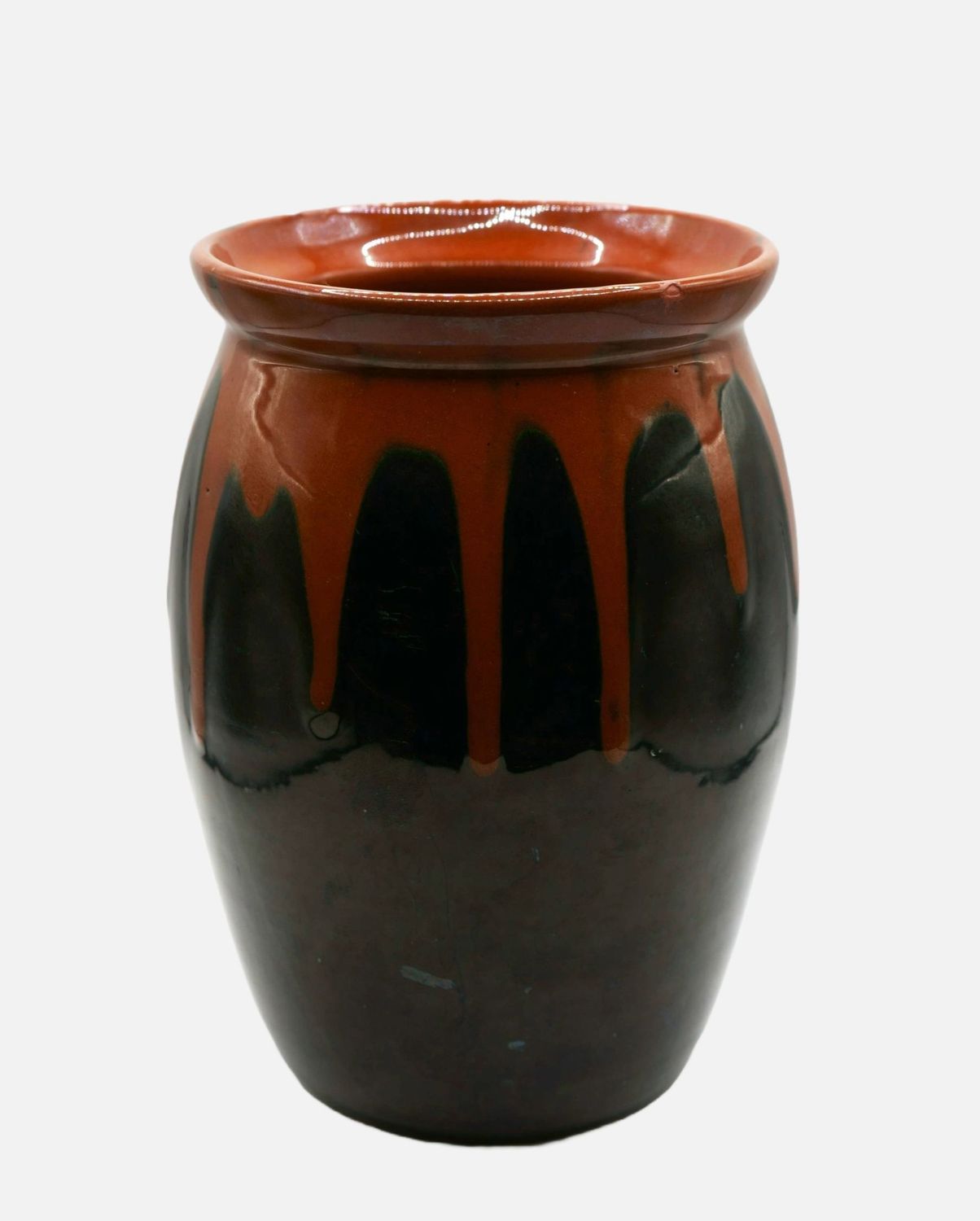Kunsttöpferei Kandern, Bulbous vase with gradient glaze, c. 1920
Kunsttöpferei Kandern(1897-1927), Bulbous vase with clay-colored gradient glaze on a black-blue ground , between 1914 and 1927. Terracotta, marked 'KTK' on the underside and identified as model number '780', 19 cm (height) x 12.5 cm (diameter), interior size of the opening: 9.5 cm.
- two retouched chips to the muzzle, minimal scratches to the base, otherwise in very good condition
- Inner abundance -
The simple but intriguing artistic idea is to give the bulging vase a black-blue glaze over which a clay-colored gradient glaze runs. Since the body is clay colored before it is glazed, the material itself runs over the glazed body, so that the inside becomes the outside. By leaving the upper edge completely clay-colored, it appears as if the glaze is flowing out of the interior, making the vase aesthetically the source of its own material.
The strong contrast with the blue-black ground emphasizes the clay-colored gradient, which in turn makes the blue-black body more present by reproducing the bulbous shape. Because the gradient is different for each vase, each piece is unique.
About the Kunsttöpferei Kandern
After Max Laeuger had been working intensively on ceramic design in Kandern and Karlsruhe since 1892, he founded the Prof. Laeuger'sche Kunsttöpferei as part of the Tonwerke Kandern in 1897. Under his direction, which lasted until 1913, he created 738 designs for vessels and 320 designs for architectural ceramics. The works are marked with the pressed mark of the letters "MLK" set in a square.
Laeuger introduced new artistic techniques to pottery. In addition to the effective gradient glaze, in particular slip painting, which is based on the pâte sur pâte technique of porcelain design, in which colored clay is painted onto the clay body. This creates relief-like effects and allows the creation of entirely new patterns. Using these techniques, Laeuger transferred the ornamentation of Art Nouveau to ceramics in an innovative, abstract, and materially oriented way, thus establishing modern artistic ceramics. These innovations were by no means limited to the supposedly artistically irrelevant field of handicrafts. On the contrary, a new, socially reforming artistic aspiration emanated from the arts and crafts, which is also reflected in Laeuger's co-founding of the Deutscher Werkbund in 1907.
After leaving Kandern, Laeuger established his own ceramics workshop in Karlsruhe in 1916, where he produced some 5,000 ceramics until 1944 and supplied the Staatliche Majolika Manufaktur Karlsruhe, founded on the initiative of Hans Thoma and Wilhelm Süs, with designs between 1921 and 1929.
In 1920, Hermann Hakenjos Sr. took over the Kandern art pottery, which continued in the artistic spirit of Laeuger and whose products were marked with the incised letters "KTK" in a square. In 1927, Hakenjos and the ceramist Richard Bampi founded the Fayence-Manufactur Kandern. Their products were stamped with the letters "FMK" in a triangle.

